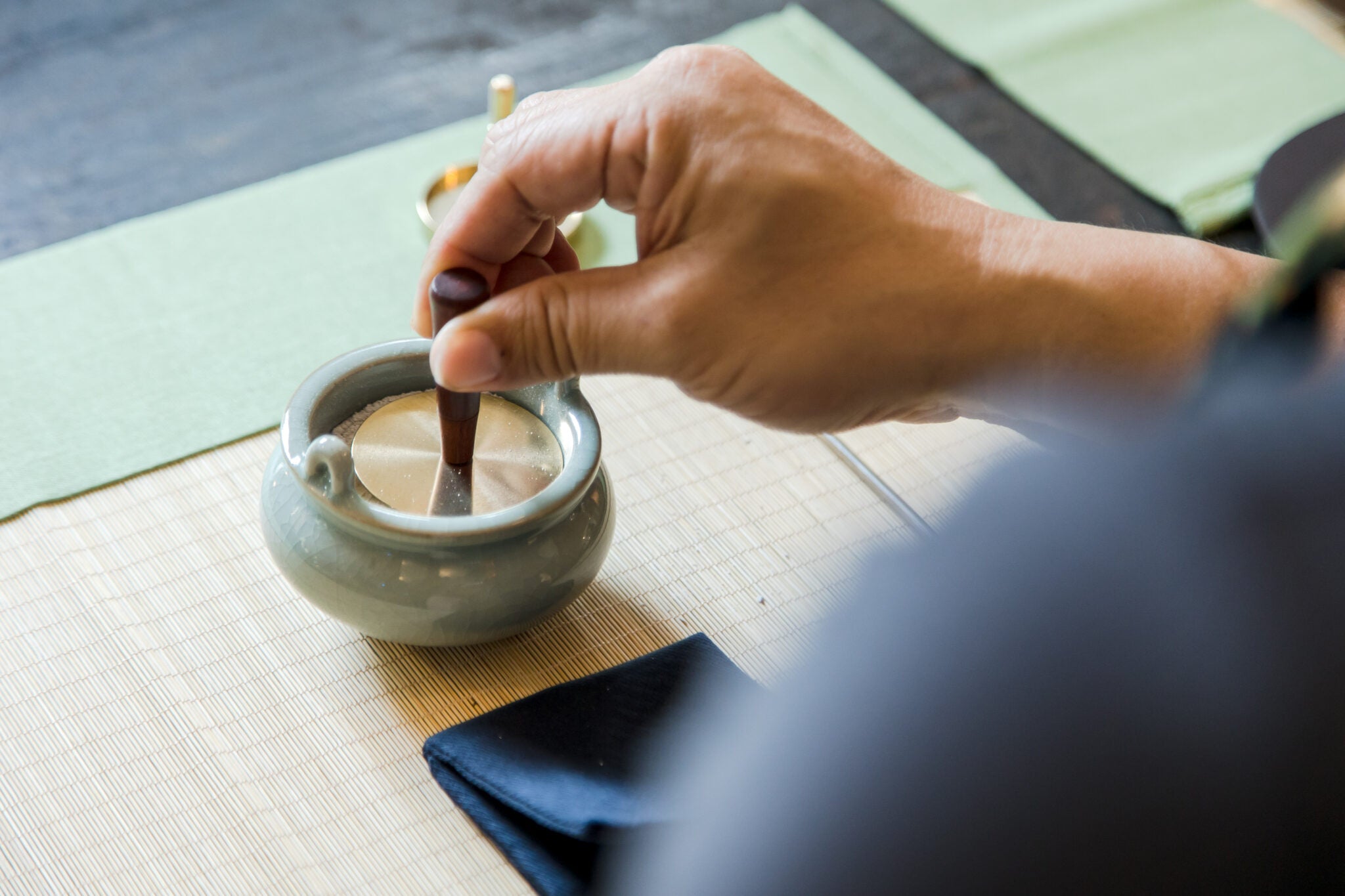
Sadō
The Way of Tea
In the art of tea, the essence of "harmony and clarity" emerges as the embodiment of natural beauty. From the inception of wabi tea by the founder Murata Jukō, tea practitioners have sought to explore the subtleties of a tranquil life through simplicity and silence. Jukō opposed opulence and advocated for modesty, favoring austere black pottery for its understated elegance and serene beauty. With these humble tea utensils, hosts extend genuine hospitality, finding not only aesthetic pleasure but also nurturing moral refinement.
Embracing the simplicity of Japanese craftsmanship, tea masters often choose utensils in muted, natural tones—like the colors of withered leaves or gentle greens—that harmonize with the atmosphere of quiet contemplation. These earthy hues, defined by their "rustic" quality, capture a raw, unrefined beauty. This aesthetic sensibility, valuing serenity and tranquility, reveals a profound joy in simplicity and fosters a sense of spiritual contentment.
When arranging the tea room, the host seeks to cultivate a sacred, almost otherworldly atmosphere that honors the natural beauty of each element. In the practices and rituals of the tea ceremony, the emphasis is placed on nature over human intervention, celebrating the essence of life in its most authentic and harmonious state. This focus on inner cultivation over material wealth is rooted in Zen philosophy and is a defining characteristic of the tea ceremony.
Japanese tea culture cherishes the principles of "Wa, Kei, Sei, Jaku," along with the "Seven Rules." "Wa" symbolizes harmony with nature; "Kei" embodies the spirit of respect among all beings; "Sei" is about achieving purity of heart and mind, free from distraction, to reach the essence of Zen; "Jaku" signifies a profound tranquility, merging with nature in a timeless stillness.

Kōdō
The art of incense
In ancient times, when hosting guests, it was customary to include three essential elements: flower arrangements, incense, and tea. These three traditions, deeply rooted in cultural heritage, are heavily influenced by Zen philosophy. The art of incense, or Kōdō, emphasizes silent contemplation. As delicate wisps of smoke rise, individuals are encouraged to reflect on the transient nature of existence and the changes that unfold within the incense's subtle aromas. This practice aligns seamlessly with Zen meditation, as the scent serves to calm the mind, bringing harmony to one's emotions in an intangible yet profound way. Through the act of inhaling the fragrance, one's spirit is invigorated, helping to forget the troubles of the mundane world and discover a serene oasis amidst life's chaos.
Japanese incense practices place great importance on the Zen tradition. They do not merely refer to the act as "smelling incense" but rather as "listening to incense" . In Japanese, this concept implies an experience that goes beyond just scent detection; it involves attentively engaging with the subtlety of the fragrance, emphasizing mindfulness during the burning process.
To smell with the nose, to understand with the heart—this is the essence of Kōdō. Within the confines of a small mat, all five senses are heightened. The way of incense aims to help you rediscover your forgotten "nose," to find your own peaceful world.
Within the intangible, colorless aroma, some find their sense of smell awakened, feeling a profound sense of joy. Others reach a deep meditative state, losing themselves entirely in the moment. Some perceive the principles of the "Four Seasons and Five Elements," while others envision a serene scene where "the moon illuminates the empty mountains, and all sounds are silent."

Courtyard
The art of Zen
Zen aesthetics have profoundly influenced the design of Japanese courtyards. They emphasize tranquility, simplicity, and harmony.
Japanese courtyards differ significantly from those in other parts of the world. While most gardens are designed to be "seen" and admired for their colorful beauty and intricate designs, Japanese courtyards are meant to be "contemplated." It is as if they close your ears and cover your eyes, requiring one to perceive their construction from within.
Take, for example, the iconic karesansui (dry landscape) garden, which is often found in temple courtyards. Karesansui gardens are created using stones, gravel, and a small amount of moss and shrubs to represent the sea's waves. The color palette is a monochromatic gray and white, with plants such as pines and shrubs, silent and emotionless. The stones, reminiscent of sea cliffs, all evoke a sense of rigorous, meditative practice. Monks frequently meditate in front of these dry landscapes, embodying a philosophy of solitude and austerity. This aligns with the Zen notion that one must discard worldly appearances to attain true understanding—finding profound beauty in scarcity and antiquity.
